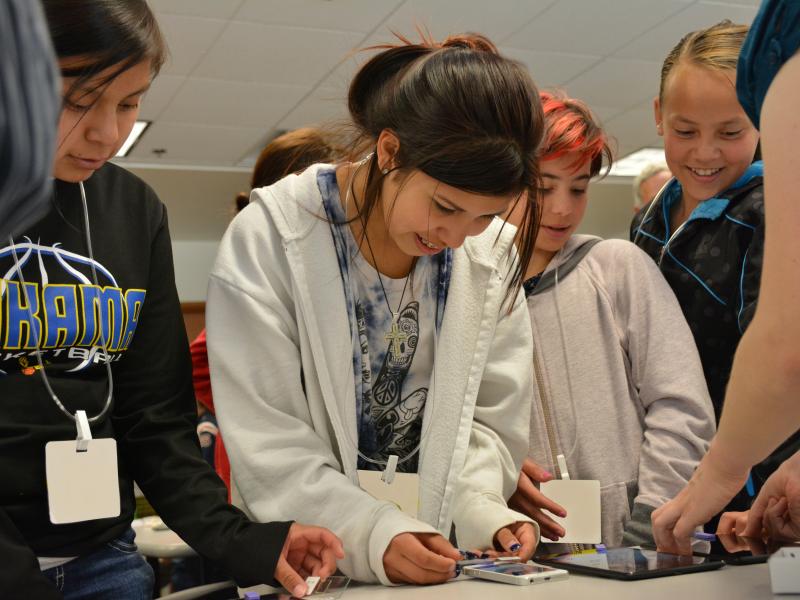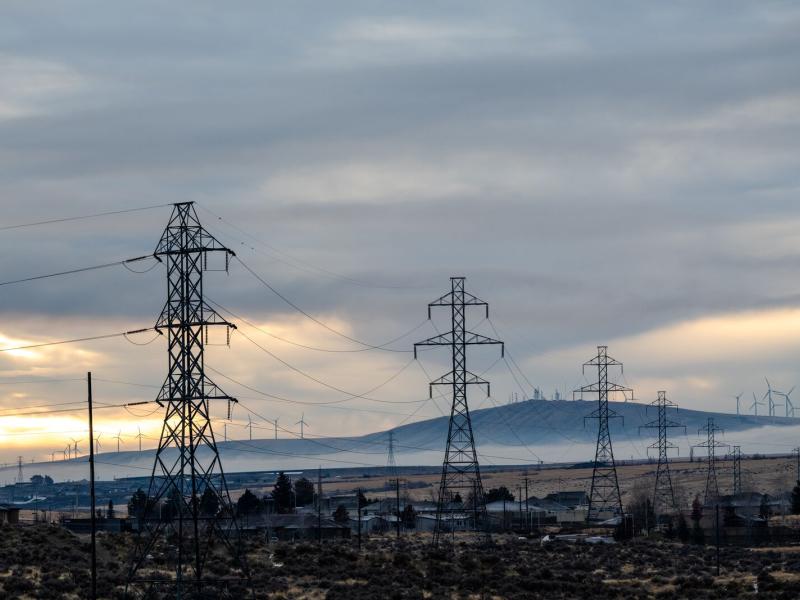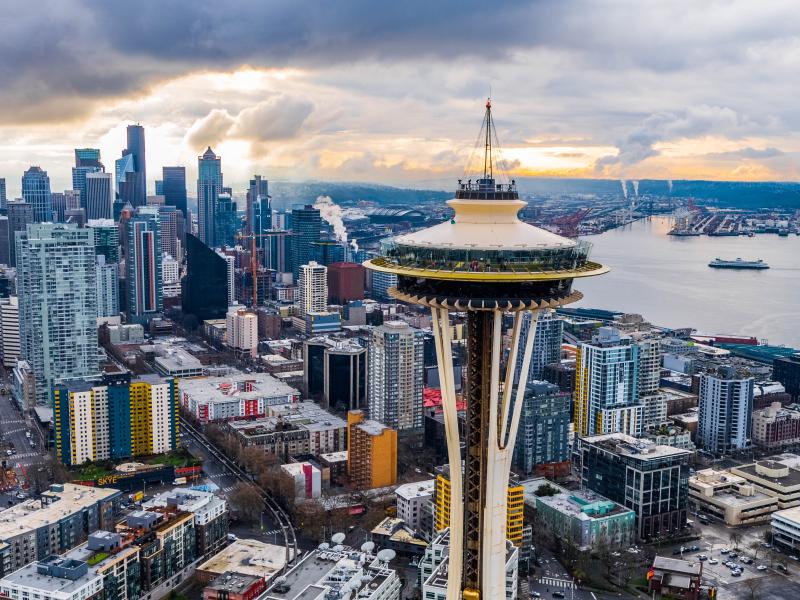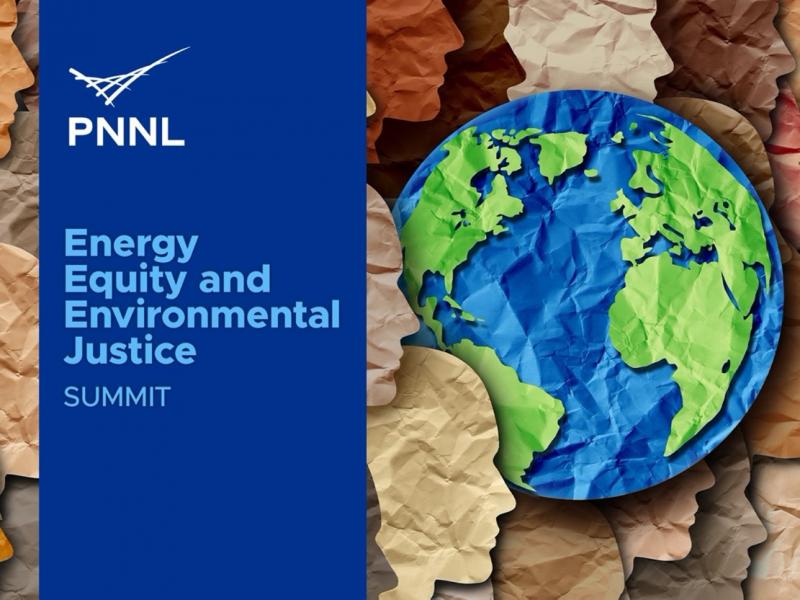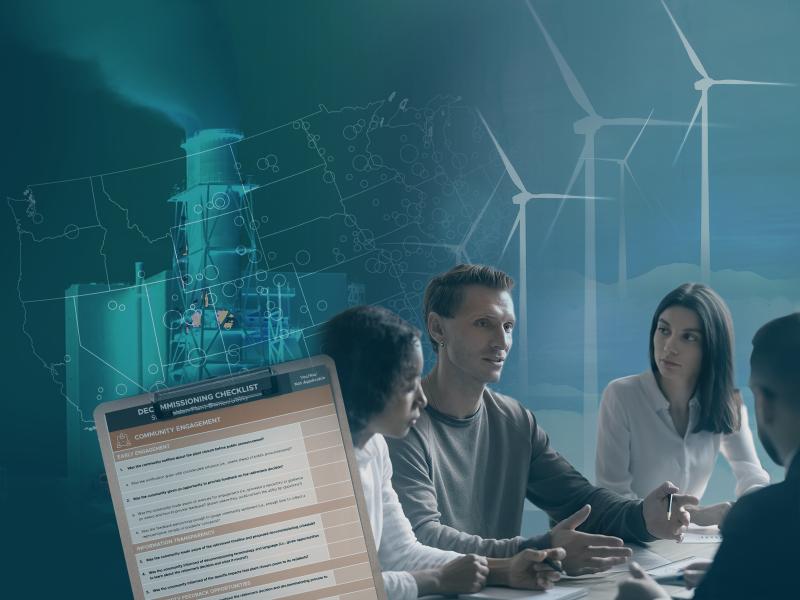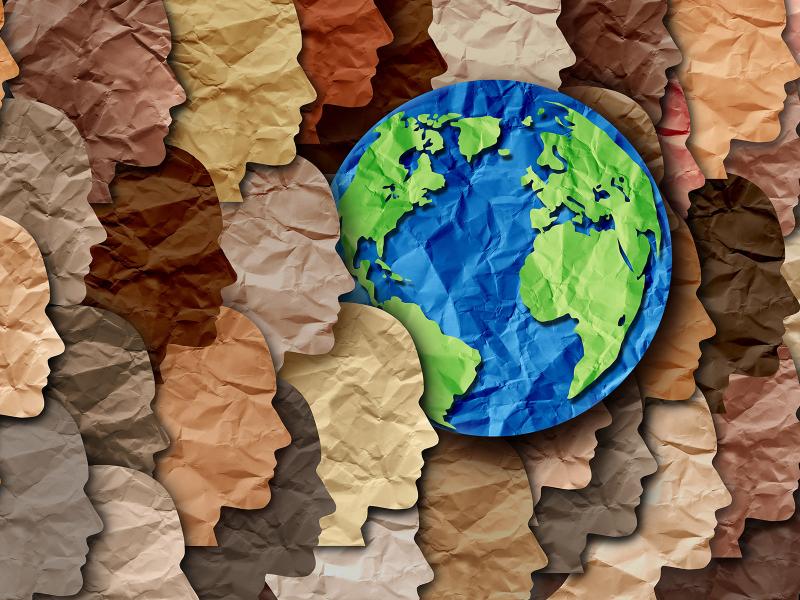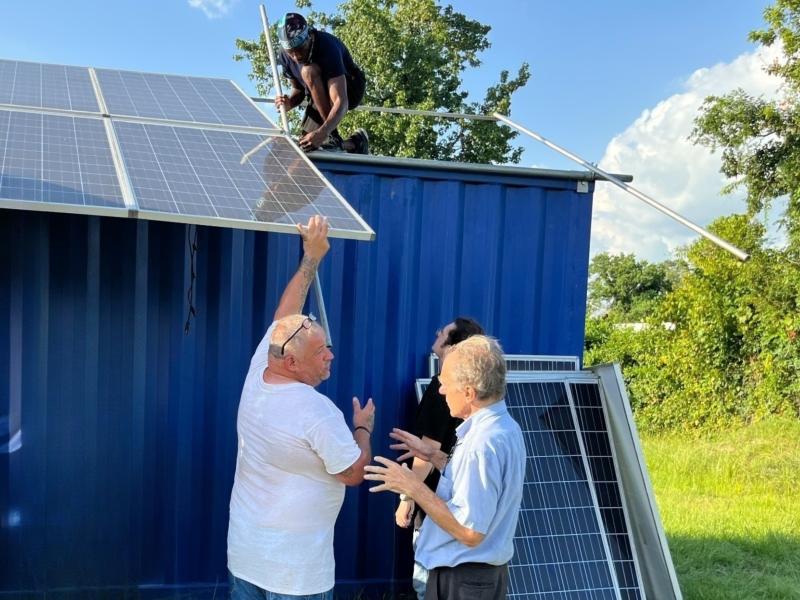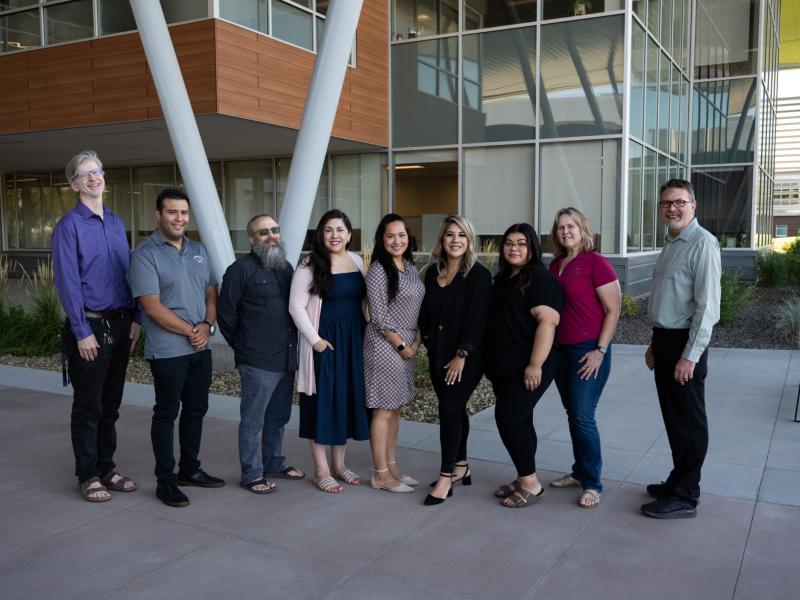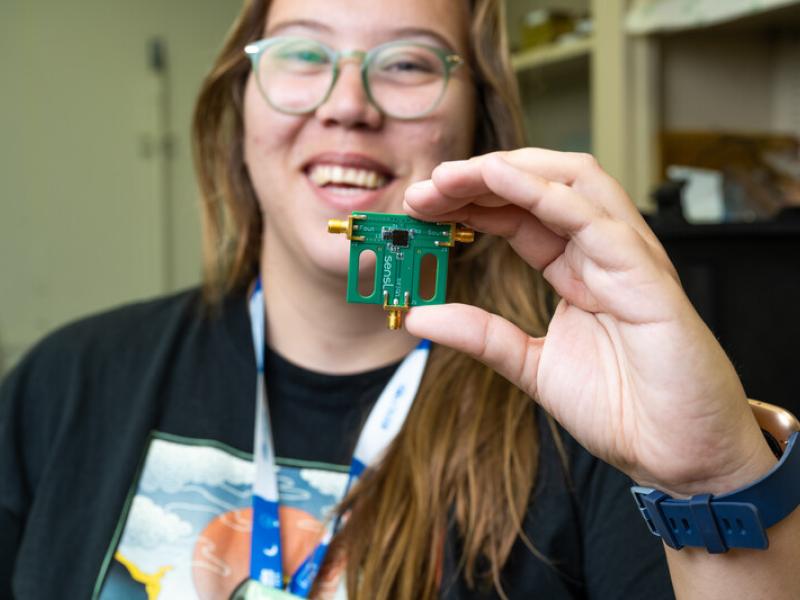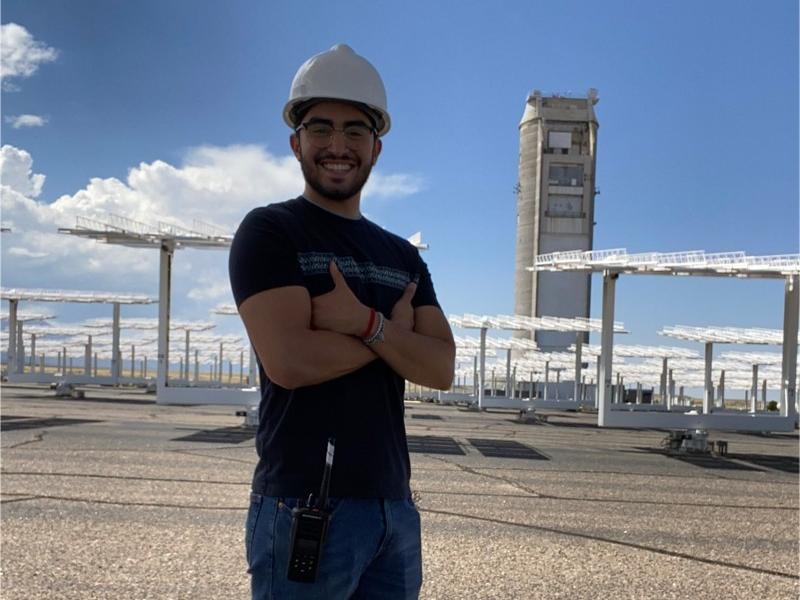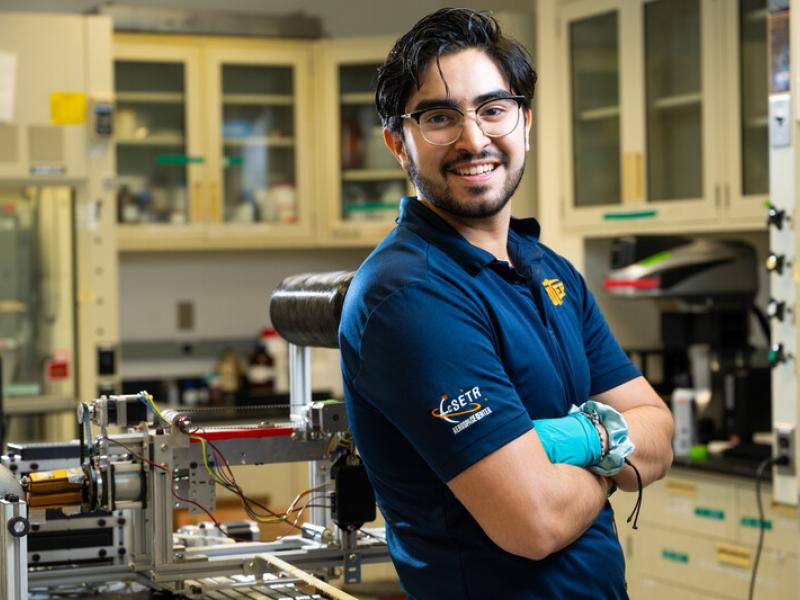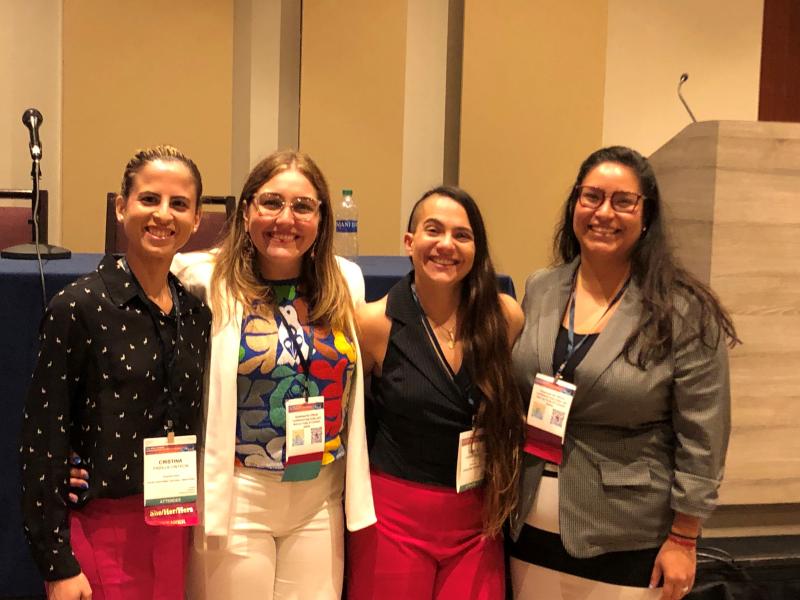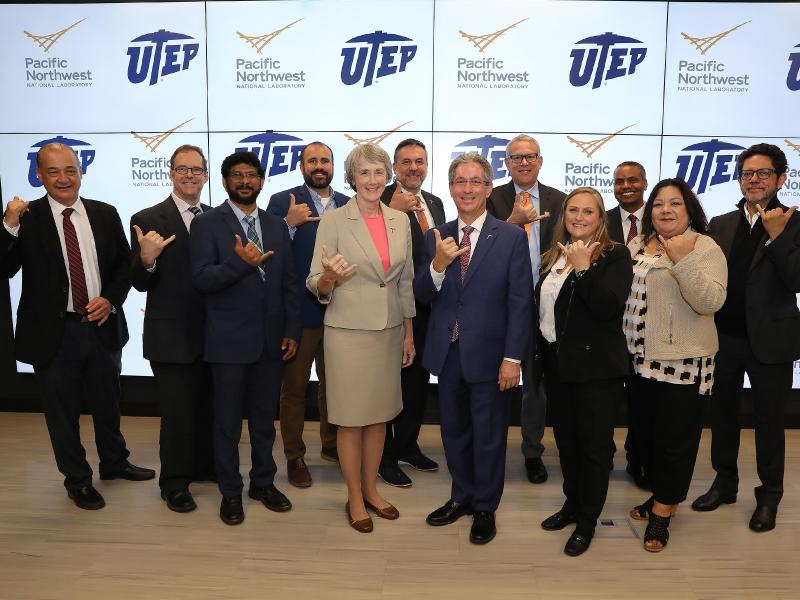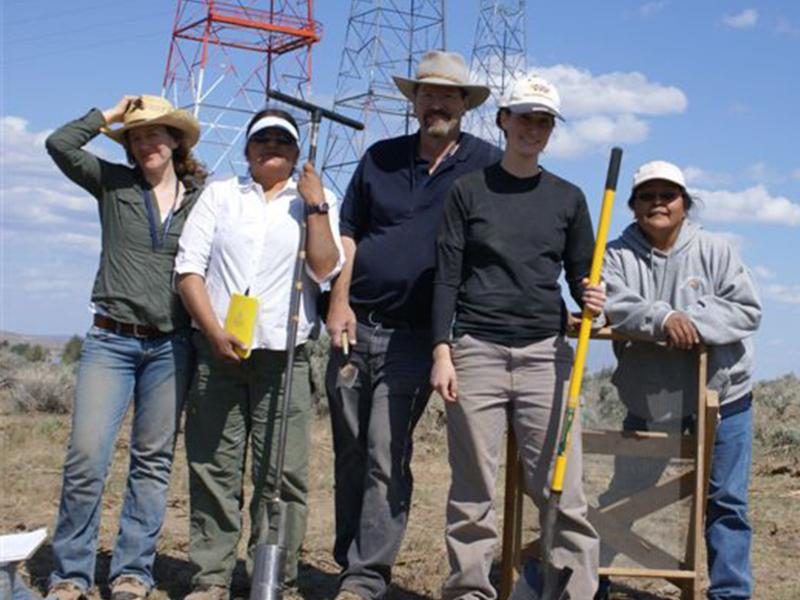
PNNL Celebrates
DOE Justice
Week 2023
PNNL Celebrates
DOE Justice
Week 2023
Highlighting research aimed
at advancing equity and
environmental justice
Highlighting research aimed
at advancing equity and
environmental justice
Equity Empowered
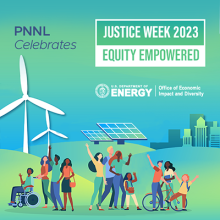
The Department of Energy's (DOE) Justice Week 2023: Equity Empowered, happening Oct. 30 – Nov. 3, is a hybrid event dedicated to empowering each other to move toward a more equitable, clean, and just energy future.
At Pacific Northwest National Laboratory (PNNL), staff across multiple fields work every day to achieve and advance these goals. Hear from sustainable energy researchers and other experts at PNNL about how their work is advancing equity and environmental justice in the clean energy transition and assuring climate change investments benefit communities often left behind. To learn more about how DOE is celebrating Justice Week, how you can get involved, and to register for the event, go to their website.
|
EXPLORE BY DAY: |
Day 1: Equity Portfolio Day |
Equity Portfolio Day focuses on the advancements made by DOE in relation to key equity and environmental justice executive orders 13985 and 14091. The foundation of these orders is based in advancing racial equity and support for underserved communities through the federal government. Through PNNL's technical support in helping agencies comply with the orders, including population screening analysis, impact pathway identification, assessing environmental justice impacts of federal actions, and more, PNNL is proactively furthering these orders.
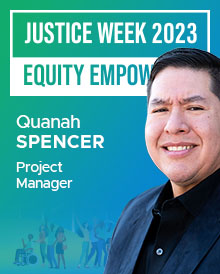 Why are these equity and environmental justice executive orders important? Ay. Wani’kshaash (My name is) Quanah Spencer. Wash-nash xwa’lwaypam w-in-a Yakama (I am a member of the Klikitat and Yakama Tribes). In my work, these orders serve as a starting point for how, why, and when federal agencies should talk with communities that have been highly impacted by actions in the past. I have helped in implementing these executive orders by providing very seasoned and detailed advice to federal agency staff in how to talk with and listen to these communities. The lived experience I earned as a Tribal member has helped me provide this advice. I currently reside on a Tribal reservation in a community that has a diverse population and where I live with those same conditions that many of these vibrantly diverse communities have experienced themselves. It’s a beautifully diverse and open place to live. |
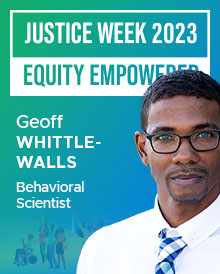 How does your and PNNL’s work advance racial equity and support underserved communities? My research at PNNL employs a multidisciplinary approach to investigate the complex interplay between race as a social construct and systemic barriers faced by marginalized populations. My work, which I refer to as the "science of human nature," aims to uncover the psychological underpinnings of racial and social disparities that hinder the inclusion of specific demographic groups. Ultimately, the objective of my research is to facilitate a comprehensive understanding of these issues and devise practical solutions to empower underserved communities and promote racial equity. |
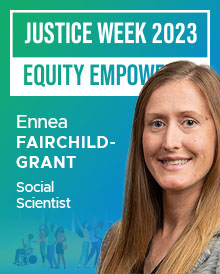 How have you helped to implement these executive orders? Social science methods, in collaboration with other disciplines, are a key way that we work to operationalize these executive orders. By learning from the experiences, perceptions, values, and concerns of those who are involved with various energy issues, we can better understand historical and current energy equity issues to inform future processes with the goal of a more equitable energy future. Environmental justice considerations should be at the forefront of any research, with energy topics as no exception. The current administration places a heavy emphasis on this topic, but environmental justice has roots in historical and current injustices that will require significant structural change in order to combat future inequities. There is a lot of work to be done, and I’m excited to see where this can go with the direction of PNNL’s leadership. |
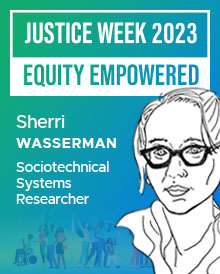 How can the public get involved in the initiatives set forth in these executive orders? I see a few concrete ways in which members of the public may contribute. I’d encourage members of the public to participate in surveys, interviews, focus groups, and other types of listening and conversational engagements so their voices may be heard as a part of the research and decision-making processes. Many federal energy infrastructure projects include “engagement” components. The strength of these engagements is dependent upon truly engaging a wide range of community members—particularly those who may not have always been involved. Within the projects I’ve been a part of, the teams are making a concerted effort to acknowledge, actively engage, and integrate voices of those who may not otherwise be involved in federal-scale energy infrastructure. |
Equity Portfolio Day Related Stories
Protecting Special Places through Tribal Relations
PNNL Climate Research Has Far-Reaching Benefits
Students Discover the World Through a Smartphone Microscope
Day 2: Justice40 Day |
Justice40 Day focuses on the Justice40 Initiative, a government goal that 40 percent of the overall benefits of certain federal investments in areas including clean energy and energy efficiency, clean transit, affordable and sustainable housing, training and workforce development, the remediation and reduction of legacy pollution, and the development of clean water infrastructure flow to disadvantaged communities. Relatedly, PNNL is helping agencies identify disadvantaged communities that are marginalized and overburdened by pollution and underinvestment, as well as supporting agencies' meaningful engagement to protect community members' opportunities to provide input. Justice40 Day is also an opportunity to explore how PNNL experts use data analysis to address equity challenges and share information about intergovernmental efforts.
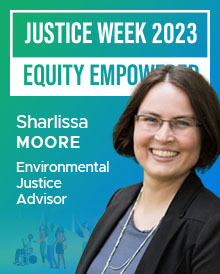 Why are the goals of Justice40 important? Energy systems have historically not benefited or have even harmed disadvantaged communities through disproportionate negative effects, such as air and water pollution, unevenly distributed job opportunities, and energy ownership. During this energy transition, there is an opportunity not just to change the technology that powers our country, but also to change the social equity dimensions of how energy is produced and consumed. Justice40 can be seen as working toward systemic change in the social aspects of energy systems and recognizing disadvantaged communities as stakeholders in energy transition processes and beneficiaries of energy wealth. |
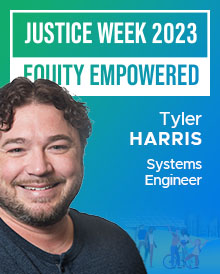 What are the benefits of data analysis in addressing equity challenges and how are you using data analysis in your work to address these challenges? Much of the past work addressing equity and justice challenges has been of a more qualitative nature. Verified physical data, models, and metrics are also vital to identify existing hot spots, model system tradeoffs, and select the most beneficial solution set. Our team of sustainability engineers are leading an effort to establish an environmental justice life cycle assessment (EJ-LCA) framework to help identify and mitigate existing environmental justice hot spots during the transition to clean energy. For example, we use the EJ-LCA framework to measure potential air quality changes in disadvantaged communities that are a result of nearby proposed clean energy projects to show a percentage reduction potential for harmful particulate matter emissions in the disadvantaged area. Our goal is to formalize and disseminate this work such that when any life cycle assessment is completed, it includes environmental, social, and economic results with justice and equity considerations aligning with Justice40 and other social justice and equity goals and priorities. |
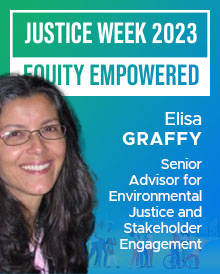 How does PNNL's work help to achieve the Justice40 goals? Our work aims to be attentive to inclusive engagement of citizens in clean and decarbonized energy transitions, particularly people and communities that may have been historically underserved or may be newly vulnerable to changes brought about by climate change or energy systems. My work focuses on how to use program management and institutional strategy as a means toward creating effective inclusive approaches. This means a combination of research/analysis, program development, and team building. For DOE's consent-based siting efforts, for example, we designed a two-year, $26 million funding opportunity that catalyzed existing and new social networks to leverage DOE’s investments to be far more inclusive and creative in its approach than a federal agency can be on its own. Our team spans six national laboratories, including PNNL, and includes substantial support for the awardees. The 12 community awardees, each of which is an organization with substantial convening capabilities, each received $2 million for 18 to 24 months to develop a consortium of partners and stakeholders to explore issues related to nuclear waste storage in the context of public values and social needs and interests. The map of awardees and partners reaches every corner of the United States. Awardees are able to direct small grants to communities within their consortia, allowing for extra support to communities that need more resources to participate or bring their perspective to the table. We are currently developing methods for assessing how resources are being allocated in a Justice40 context in this network. |
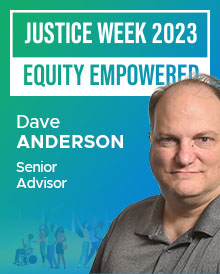 How is Justice40 different from environmental justice? The similar names have led to widespread confusion among the agencies we support, and certainly among the public about how these initiatives are similar or different. Environmental justice was here first and relates to the environmental impact of federal programs. Environmental justice asks whether adverse impacts will be disproportionate to historically underserved or overburdened communities, such as non-white races/ethnicities and other types of disadvantaged communities. Justice40 asks what proportion of the benefits of federal programs flow to disadvantaged communities and explicitly does not consider race/ethnicity in the determination of whether a community is disadvantaged or not. Although there is considerable overlap in these communities and many agencies and the public often use these terms interchangeably, their intended applications are considerably distinct. |
 Who will benefit from PNNL's work in this area? Any community looking for relatively cheaper and cleaner energy will benefit from our work. Moving toward zero-emission technologies and renewables can help improve air quality and overall ecosystem health. We are working on developing interactive tools that can improve community resilience in terms of tackling extreme climate events and facing increased clean energy demand. With the advent of cloud computing environments and data storage platforms, we are working on making our models and data more accessible to the public. |
Justice40 Day Related Stories
Database Reveals Energy Equity Policy Activities Across States
New Tool Shines Light on Energy Equity Gaps
DOE National Laboratories Identify Equity and Justice Opportunities
Day 3: Energy Justice Day |
Energy Justice Day focuses on DOE's energy justice initiatives and the challenges and barriers energy justice stakeholders face. PNNL is helping translate big ideas into actionable plans which are achievable for specific DOE projects, as well as finding ways to advance energy justice in disadvantaged and underserved communities by better understanding the barriers they face.
 What challenges and barriers do energy justice stakeholders face? Often the challenges and barriers faced by stakeholders are process-oriented. Stakeholders may feel like they don’t have ample opportunities to engage in decision-making processes or meaningfully affect the course of development in a way that aligns with their community’s values. When people feel they have a voice and their concerns are taken seriously, they are more likely to come to the table to work on solutions. When stakeholders feel sidelined in the process, or that engagement is superficial, it leads to less trust in decision-makers and opposition to the outcomes, which can cause significant delays in deployment of new technologies that can help meet our climate goals. Our research at PNNL aims to help better understand these social barriers and the process of engagement to help DOE and other agencies, developers, or regulators utilize tools and best practices that empower communities and lower the barriers to participation for underserved or marginalized publics. |
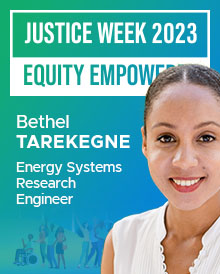 How is PNNL advancing DOE’s energy justice initiatives? We have research that delves into the energy justice implications of distributed energy resources (DERs), like solar, storage, and wind, and how we can think about designing and implementing DER solutions for the purposes of advancing energy justice in disadvantaged and underserved communities. We also work on projects that are aimed at partnering with various communities to help them address their energy-related inequities. Our Energy Storage for Social Equity program is a good example of the work PNNL is doing with communities and how we are using DERs for social good. We also work on coal power plant redevelopment efforts, where we are supporting DOE in its efforts to revitalize coal and energy communities across the nation. We are providing support with data, tools, regional planning, and educational resources to allow communities to take ownership of their energy futures and better understand the power plant retirement and redevelopment process. |
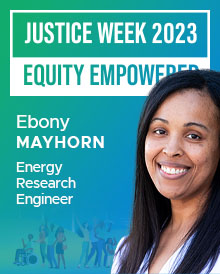 Why are energy justice initiatives important? As electrification and energy efficient technologies attempt to reach low-income and underserved communities, more energy equity and justice challenges are likely to arise, including higher energy costs, limited access to energy upgrades, disinvestment in electricity systems and environmental issues like pollution exposure. These challenges are not only pertinent to households but also small commercial building owners and occupants. Since small businesses are responsible for 60-70% of industrial emissions and typically occupy 90% of U.S. commercial buildings that are classified as small (less than 50,000 square feet), these businesses are vital to ensuring the nation achieves decarbonization goals. Therefore, energy equity and justice issues need to be well investigated for residents and small businesses to develop appropriate solutions that lead to benefits for all. |
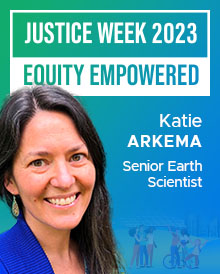 How can disadvantaged communities be included in these initiatives? Disadvantaged communities can be included in DOE’s energy justice initiatives through co-creation and collaboration that creates programs and opportunities to achieve their goals. One example of this is technical assistance programs that are envisioned and shaped by disadvantaged communities, are technology agnostic, and where communities apply to participate rather than having an energy developer or DOE propose to demonstrate a new technology in a disadvantaged community. We need to go beyond engagement to reimagine opportunities for communities to work with scientists, practitioners, and policymakers to fund, develop, and shape these programs. |
Energy Justice Day Related Stories
Community-based Transition from Coal Dependency
Environmental Justice for All
Collaborative Effort Empowers Disadvantaged Communities to Join the Clean Energy Revolution
Day 4: MSI and MBE Day |
Minority Serving Institutions (MSI) and Minority Business Enterprises (MBE) Day focuses on ways to engage the next generation of science, technology, engineering, and math (STEM) students at MSIs and to highlight available DOE funding opportunities for MBEs. PNNL works with universities to expand opportunities in research and STEM for students through initiatives like joint appointments.
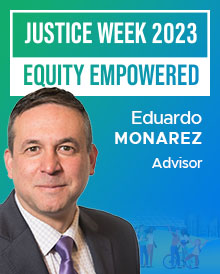 How is PNNL engaging the next generation of MSI STEM students? PNNL has a strategic partnership with the University of Texas at El Paso (UTEP) to increase collective impact by expanding STEM opportunities for students and developing research collaborations in strategic areas. This specific strategic partnership has resulted in 10 joint appointments of PNNL staff to UTEP, 18 internships at PNNL, 15 joint proposals that total nearly $26 million in funding, and just over $1 million in R&D funding from PNNL. |
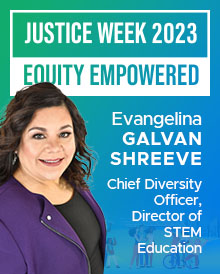 How can people get involved in MSI programs? We have a variety of efforts and programs at PNNL designed for MSIs, MSI faculty, and students from historically underrepresented or underserved populations. Many of these are available throughout the year and continue to grow based on interest and participation. Institutions that want to learn more can do so on our website. We hope MSI faculty will participate in our workshops, join the Visiting Faculty Program, and engage with us on joint research proposals. Additionally, we offer many internship opportunities for MSI students pursuing STEM degrees in national security, energy science, and more. We encourage interested students to review the options available at our internships webpage. |
MSI and MBE Day Related Stories
Partnering with Educators to Inspire the Next STEM Generation
Internships Empower Students to Grow STEM Identities
UTEP Student Explores a Career in Research at PNNL
Day 5: DEIA Day |
Diversity, Equity, inclusion, and Accessibility (DEIA) Day focuses on DOE’s DEIA efforts to increase diverse representation, sustain a culture and environment of inclusion and belonging, and identify and address inequitable barriers to assure fair access and opportunities.
 "At PNNL, we are committed to fostering a workplace that fully embraces and values diversity and inclusion. By doing so, we benefit from a breadth of perspectives, insights, and experiences that enables the innovation and creativity one expects of a DOE national laboratory.” |
 Why is it important that national laboratories show their DEIA impacts? National laboratories are situated at a unique intersection of collaborative research due to their state-of-the-art scientific facilities, world-class instruments in our laboratories, and the multidisciplinary teams that come together to take on science challenges of our day. It’s where people come to do the world-changing work of science in a way unlike any other institution. And that’s precisely why it is significant we show DEIA impact and engage students, faculty, and partners who may not otherwise have access to the capabilities of a national laboratory at their home institutions. At PNNL, we know people are our strength. Building an inclusive and diverse workforce that supports our science mission is critical for the work we’re doing today and the impact we will make tomorrow. The WE Culture of PNNL is committed to developing a sense of belonging and inclusion that allows all voices, perspectives, and ideas to come together as we pursue scientific impact and advancement in an environment that is distinct from anywhere else in the nation. At national laboratories, we can and should provide leadership in how organizations conduct compelling research, collaborate for shared impact, and connect to our communities in ways that put DEIA at the forefront. |
DEIA Day Related Stories
Diverse Scientists and Engineers for a Sustainable Energy Future
Sharing Their Stories, PNNL Researchers Inspire Others and Increase Diversity in STEM Careers
Building Partnerships to Transform STEM Innovation
Environmental Justice @ PNNL Newsletter
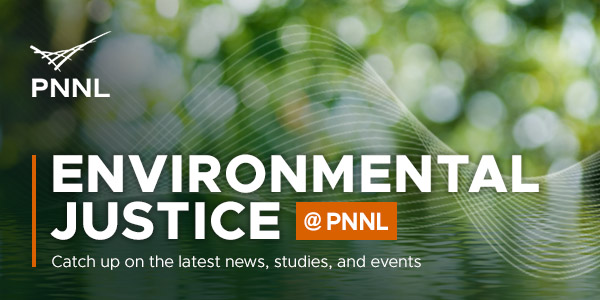 The Environmental Justice @ PNNL newsletter provides an inside look at the real-world application of PNNL's environmental justice capabilities and the contributions of its experts specific to the nation’s energy system. It offers the latest PNNL news, studies, and events readers can use to enhance their efforts to identify and include disadvantaged and underserved groups in regulatory decision-making, environmental assessment, and evaluating the consequences of large and complex policies and projects. Sign up to stay connected. |
Ready to Learn More About PNNL?
PNNL partners with agencies and industry to identify and engage historically disadvantaged populations in regulatory decision-making, environmental assessment, and impact estimation of the consequences of complex polices and projects. Learn more about environmental justice activities at PNNL.
DOE Office of Economic Impact and Diversity Newsletter
 The Department of Energy's Office of Economic Impact and Diversity quarterly newsletter will help you stay up to date on the office's speaking engagements, announcements, events, and other news as it happens. Sign up to stay connected. |
More DOE Office of Economic Impact and Diversity News
Keep up with DOE's Office of Economic Impact and Diversity's efforts to develop and execute department-wide policies to implement applicable legislation and executive orders that strengthen diversity and inclusion goals affecting equal employment opportunities, small and disadvantaged businesses, minority educational institutions, and historically under-represented communities. Read the latest news.

